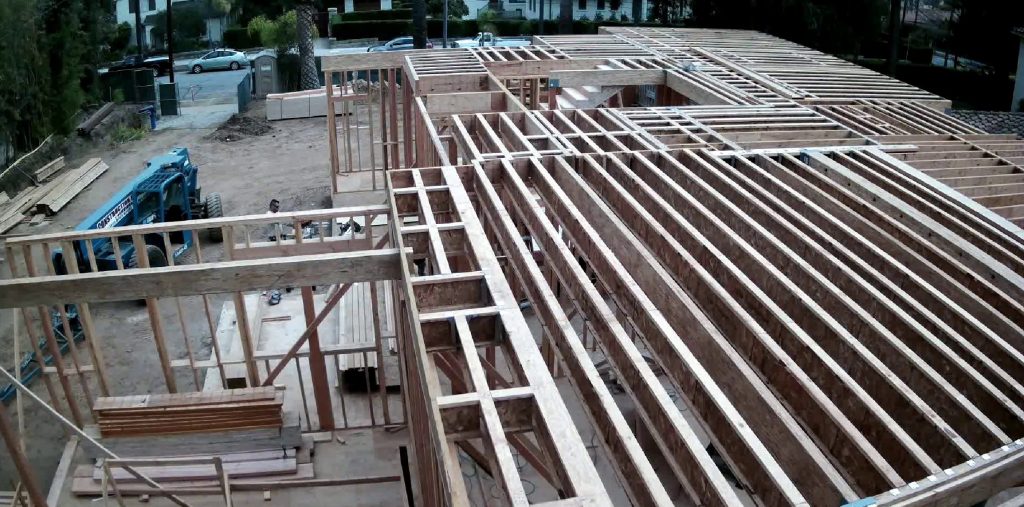We’ve started planning the HVAC, which is a real pain. Consider the structure of the second floor:

The first floor looks very similar. If you think about how you might snake ducting from one area of the house to another though those joists, keeping in mind that you can’t actually go through most of them, you can appreciate the challenge. It is pretty much impossible to run all the HVAC ducting from a single point on any floor to every room (or even a majority of the rooms).
One novel solution, and what we will likely use on some if not most of the house, are heat pump systems. A heat pump works similarly to an AC system, in that (and let me see if I get this right) it captures heat on one side using a fan coil and then releases it on another side using a compressor coil. Except that it has compressor coils on both sides, so by reversing the flow of the refrigerant, it can switch which side is cooling and which side is heating. So the same unit inside can either cool or heat the air.
With a single compressor coil on the outside of the house, we can drive 3 or 4 smaller fan / compressor units on a single floor inside the house with only a line set (think plumbing pipe) between the fan units and the outside compressor coil. The line set is easy to route through the walls and floors as you are allowed to drill small holes in a lot more places than big holes (which ducting requires).
So, we just have to find small spaces to put the inside fan units that can access each room that the serve, a much easier challenge than running all the ducting from one or two central locations.
Admittedly, had we put more thought into the structural engineering to make it easier to run ducting, we could have avoided this problem.
In the basement, while we don’t really need AC (it will stay naturally cool) we do get the benefit of being able to use the heat pump to dehumidify, a natural side-effect of the AC cooling process. If we periodically run the cooling for a short period followed by the heating for a short period, we end up with no net temperature change but a drop in humidity. In a basement, moisture from the ground can cause higher humidity which can result in mold growth. While we think we did a top notch job water proofing the basement, it is better to be safe than sorry, so we will have the added protection of de-humidification to keep things right.